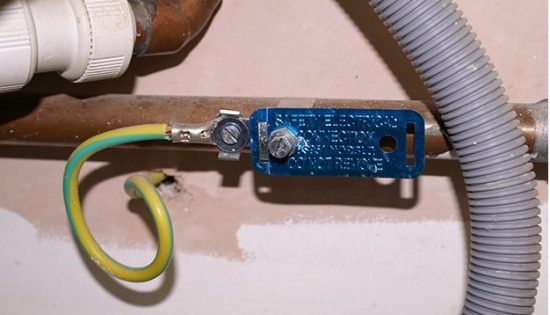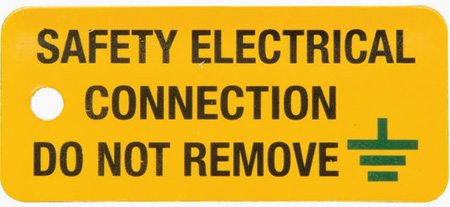Can I Remove Bonding Clamp?
I feel sure it’s use and the importance of what it does is probably lost on you.

Have you ever asked, Can I Remove Bonding Clamp?

As for the humble clamp around your pipe: What is the significance of it, and why does it have a thin metallic ‘label’?
The clamp (technically known as a BS951 clamp) is designed to provide a tight, low resistance joint to metallic pipework for the purpose of providing a bonding connection.
The ‘wrap-around’ style of the clamp allows it be be applied tightly so that there is no movement, and it is also more likely to resist slight expansion forces of the pipes when heated.
The thin (often sharp!) edge on the ‘label’ has cut many a finger in the back of a kitchen cupboard! But what is the label for? Can I remove it?
The label contains a set phrase “SAFETY ELECTRICAL CONNECTION DO NOT REMOVE” and is designed to highlight the importance of the connection to end users or others who may want to tamper with it. The label should not be removed, it would be highlighted as a C3 – IMPROVEMENT RECOMMENDED on an EICR if the label was not present.
The clamps come in a range of sizes and variations for both indoor & outdoor use:
- E14 clamps are for internal use only and are usually red.
- E15 clamps are for internal or external use and are usually blue.
- E16 clamps are for internal or external use and are usually green. They also allow larger conductor sizes to be fitted (16mm or sometimes greater)
So: Can I remove bonding clamp?

All too often, we see DIYers, or even other trades like Plumbers, come along and remove the bonding clamps without knowing the implications of not having them installed. This is a common problem at kitchen/bathroom refits where the original connections may have been disturbed.
So if you ever ask yourself again: Can I Remove Bonding Clamp? You will know where you stand!
How not to use:
We’ve seen BS951 clamps used for a couple of purposes that they are not designed for/serve no use:
- Bonding clamps are not designed to be used for earthing the outer armouring of SWA cables. This should be done with the correct SWA gland as detailed HERE. Not only is the clamp not designed for this job, cutting the sheath of the cable to allow the clamp to be fitted will allow moisture ingress into the armour wires and potentially corrode them.
- BS951 clamps on plastic pipework. Obviously more of an issue with newer properties, but common sense dictates that it is not going to serve much use on a section of plastic!
NOTE: BS951 (or similar) clamps are sometimes used by the DNO (Distribution Network Owner) to provide an earth to premises. Although this practise would not be acceptable on cables within the premises, the supply cable comes under a different set of regulations (Electricity Safety, Quality and Continuity Regulations). As such this does not apply to any main supply cables
Need anymore specific advice about the bonding in your premises? Feel free to contact me and I will be only too happy to assist
James
ElectricBlu Contractors
www.electricblu.co.uk